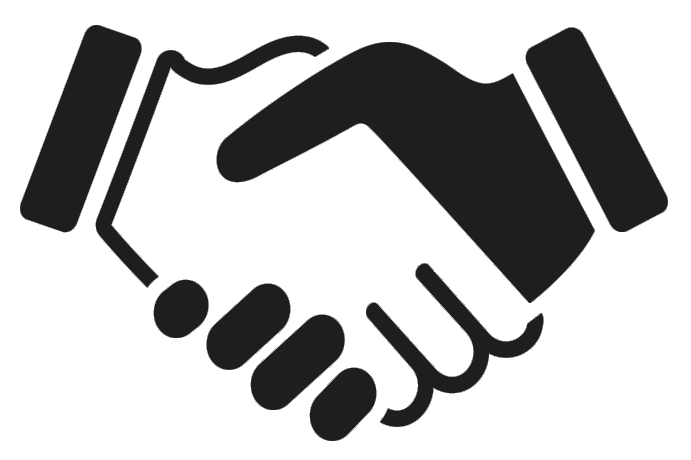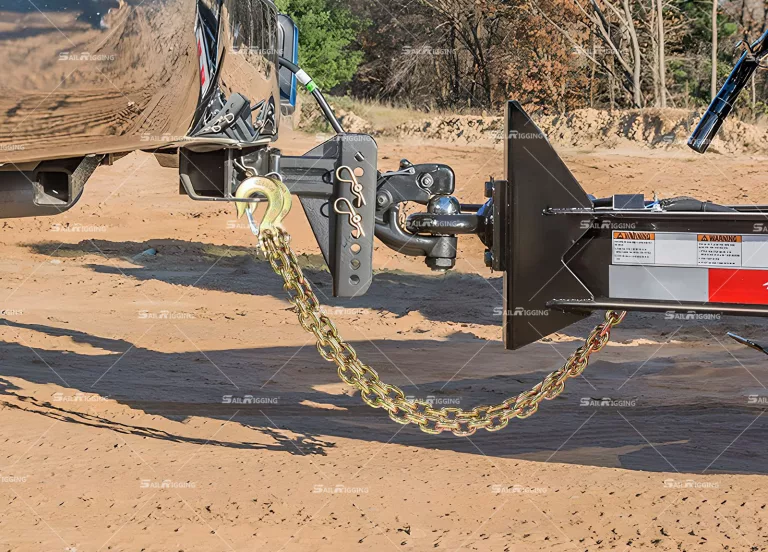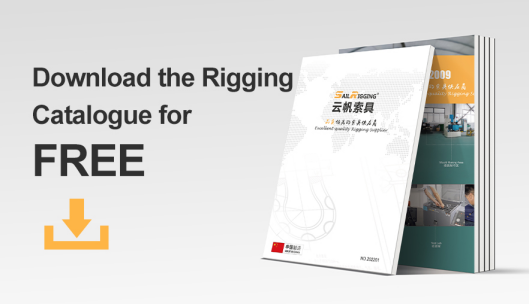Selecting the right safety chain is crucial for ensuring the security of the load and the safety of all parties involved in transportation. To make the right choice, several important factors need to be considered. Here’s an expanded breakdown of the key elements when choosing a safety chain:
- Load Capacity (Working Load Limit – WLL)
The working load limit (WLL) is the maximum weight a safety chain can securely handle during normal operation. When selecting a safety chain, always choose one with a WLL that exceeds the total weight of the load being secured. This provides an extra margin of safety in case of unexpected stresses during transportation.
Calculate the Total Load Weight: Ensure the combined weight of the vehicle or trailer and its cargo is fully accounted for.
Factor in Dynamic Loads: Consider that the actual load during transit may fluctuate due to road conditions, vehicle speed, or other factors, so it’s essential to select a chain that can handle higher loads than the simple static weight.
A safety chain with a higher WLL will ensure that it remains effective even in stressful or unforeseen conditions.
- Material and Finish
The material of the safety chain directly impacts its strength, corrosion resistance, and longevity. The choice of material should be guided by the specific environmental conditions the chain will be exposed to during use.
- Stainless Steel: Ideal for marine applications, coastal towing, or areas with high humidity or saltwater exposure, as stainless steel offers superior resistance to rust and corrosion.
- Galvanized Steel: Offers a strong balance between strength and corrosion resistance. Galvanized chains are commonly used in outdoor, industrial, and general towing applications, where exposure to the elements is frequent but not extreme.
- Alloy Steel: For heavy-duty towing or commercial transport, alloy steel chains are designed to carry high loads. These chains are particularly valuable in industrial settings that require long-term strength and durability.
Surface Finish Options:
Self-Color with Oil Coating: Basic protection from rust, suitable for light-duty applications in dry conditions.
Galvanized Coating: Provides an extra layer of protection against corrosion, especially for use in marine or humid environments.
Powder-Coated Finish: A strong protective coating that increases durability and resistance to abrasion and corrosion, suitable for industrial and heavy-duty use.
- Length and Tension
The length of the safety chain ensures that it can properly connect both the towing vehicle and the load or trailer. The chain should be long enough to maintain proper tension while allowing for some flexibility in movement. Proper tension is key to ensuring that the load remains secure and does not shift during transit.
Optimal Length: The chain should be long enough to connect securely to both attachment points without being excessively long. Too much slack can cause the chain to drag, reducing its effectiveness and creating potential hazards.
Proper Tension: The safety chain should have a degree of tension when connected. This keeps the load in place while preventing excessive movement. However, it should not be too tight, as that could cause undue strain on both the chain and the attachment points.
Avoid excessive slack, which can cause dangerous movement or even allow the load to become detached, and ensure that the chain is tightened properly for a secure fit.
- Attachment Points and Hooks
Safety chains must have compatible attachment points on both the towing vehicle and the load or trailer to ensure a secure connection. The type of hook or attachment method will affect how easy it is to install and remove the chain while maintaining a strong and reliable connection.
Common Attachment Methods:
Clevis Hooks: These are commonly used because they offer a strong, secure attachment that can be easily locked in place using a pin or bolt.
Grab Hooks: These hooks provide a solid and reliable connection, especially for securing chains to points that may be slightly irregular in shape. They’re suitable for heavy-duty applications.
Slip Hooks: These hooks are suitable for quick connections but should be used with caution, as they may not provide the same level of security as clevis or grab hooks.
Make sure the attachment points on both the load and the towing vehicle are compatible with the hooks or fasteners of the safety chain to ensure a secure fit.
- Compliance with Regulations
It’s essential to choose safety chains that meet the legal requirements and industry standards for your region or type of transportation. Regulatory standards often specify the minimum strength requirements, testing procedures, and installation methods for safety chains, particularly for heavy-duty towing or transport.
U.S. Regulations: The FMCSA (Federal Motor Carrier Safety Administration) and DOT (Department of Transportation) regulations require the use of safety chains for trailers and vehicles over a certain weight.
European Standards: The EN 12195-2 standard provides guidelines for securing loads and specifies requirements for safety chains in certain applications.
Australian Regulations: In Australia, safety chains for trailers are governed by ADR 62/02, which sets requirements for securing cargo.
Ensure that the safety chain you select complies with all relevant regulations to avoid legal issues and ensure optimal safety.
- Use Case Considerations: Tailored to Your Needs
The specific application of the safety chain will influence the type and strength needed. Different applications—such as towing trailers, marine transport, or RV use—require different levels of chain strength, corrosion resistance, and attachment methods.
Trailer Towing: Depending on the load size, a Grade 30 or Grade 70 safety chain may be suitable. For trailers over 3,000 lbs, double chains with clevis hooks are typically used to ensure a secure fit.
Marine and Boating: Stainless steel chains are commonly used for marine applications due to their resistance to saltwater corrosion. Safety chains are crucial for securing boats to trailers and ensuring they remain safely attached during transit.
RV Towing: For RVs, especially larger ones, a Grade 70 safety chain with galvanized or stainless steel coatings is recommended for long-term durability and security.
Ensure that the safety chain is specifically suited to your type of towing, whether for light-duty, medium-duty, or heavy-duty applications.
Choosing the right safety chain involves considering multiple factors such as the load capacity, material and finish, length, attachment points, and regulatory requirements. If you have any question about how to choose right safety chain, please don’t hesitate to contact Sail Rigging.





